What Is Small Of Back Carry?
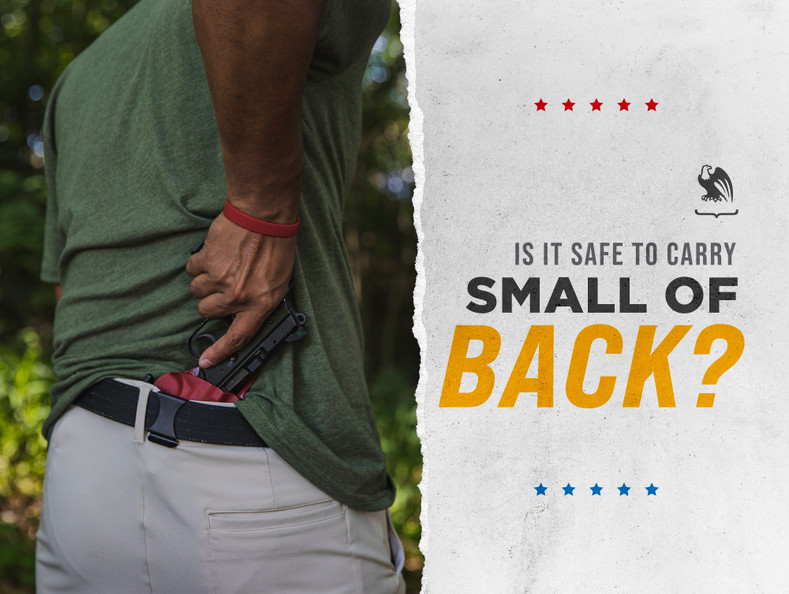
Carrying at the small of your back, otherwise known as 6 o’clock carry, has been the focus of a great deal of controversy in the gun community. But before we get into that, what exactly is small of the back carry?
Small of back carry is a concealed carry position in which a holster is placed at the 5-6 o’clock position, or 6-7 o’clock for lefties. While this position is arguably the easiest way to carry, most professionals agree it is far from the safest.
Many gun enthusiasts are drawn to the Hollywood-glamorized carry position for its undeniable comfort and concealability. But experts say the reality is that the risks of carrying 6 o’clock far outweigh the benefits.While it may be convenient, the position puts the carrier at risk of serious injury and is difficult to access, which we don’t need to tell you can be detrimental in a life or death encounter.
There are plenty of factors to consider when deciding whether to carry at the small of your back. Keep reading to learn more about the pros and cons of this carry position.
Why Do People Carry at 6 O’clock?
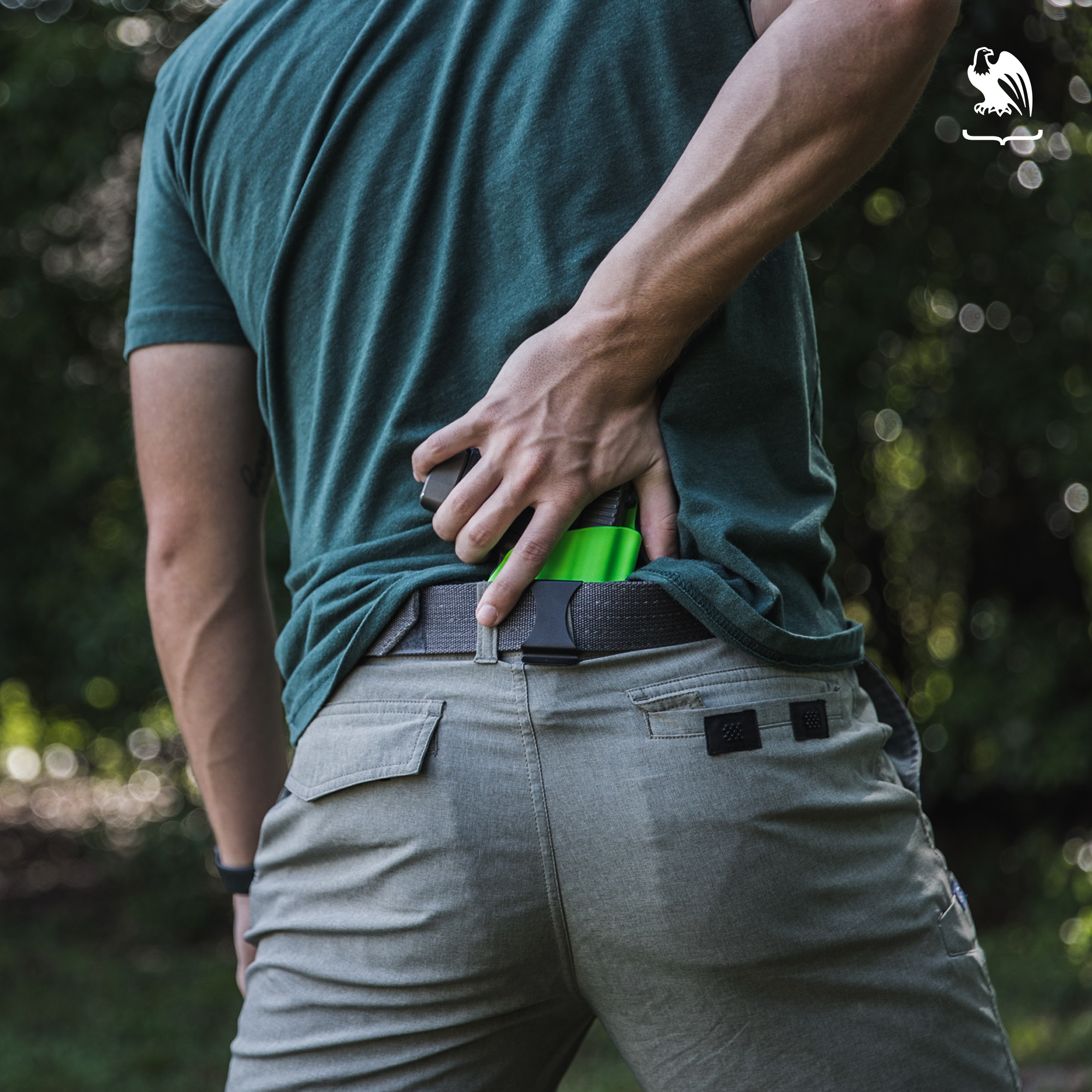
Despite the potential risks, there are a number of reasons people choose to carry at the 6 o’clock position. The two primary reasons people concealed carry small of back are comfort and concealability.
The small of your back is a convenient place to conceal a gun and holster. Because your back naturally curves at the spine, your firearm will virtually disappear under your shirt or jacket in this position.
Not only is it easy to hide, but carrying your gun at 6 o’clock is comfortable too. Because your spine is flexible, it’s more comfortable than carrying in the strong side or cross draw position. It’s also not pressing against any organs, like in appendix carry or 12 o’clock, which can be uncomfortable for some people.
Those who do carry SOB find it comfortable to carry for long periods of time and while walking or standing. If you spend a lot of your day sitting down, small of the back carry may be less comfortable.
While no one can argue the comfort and concealment benefits of carrying center of back, there are a number of disadvantages to carrying in this position, including safety and accessibility.
Is Small of the Back Carry Easy to Access?
In a word, no.
If you find yourself in a situation where you need to draw your weapon, you may only have a split second to do so.
In fact, in a situation where someone has drawn a gun on you, you only have about 0.6-2 seconds to draw your pistol and fire first depending on the circumstances, according to firearms expert John Correia, founder of Active Self Protection.
It goes without saying that accessibility and draw speed should be important considerations when choosing a concealed carry position. Which begs the question, is center of back carry easy to access quickly?
While you can practice a speedy draw from the 6 o’clock position with consistent training, it is one of the most cumbersome, and therefore slowest, places to draw from since it requires you to reach behind your back to access your weapon. It’s much easier to quickly grab your gun from positions closer to the front of your body, like appendix and 3 o’clock.
Carrying at the small of your back also requires you to use a somewhat unnatural grip, which also impacts accessibility. For SOB carry, you are forced to grip your gun either with your palm facing your spine or with your palm facing out away from your body, either of which can be awkward when grabbing for something behind you.
It’s also important to consider that you’ll likely have to clear a garment or two before getting to your gun, which is more difficult in the small of back position since you’ll have to reach BOTH hands behind your back to do so. This can also contribute to a slower draw time.
Ernie Medina, chief instructor and owner of TRB Training, says having to reach behind your back to access your weapon not only slows your draw speed but puts you in a vulnerable position, preventing you from using your hands to defend yourself.
“The aspect with the small of the back that I’m not too keen on is really having that firearm … in a position where my arms can’t really get to [it] without being in a position of vulnerability,” he said in a TRB Training video. “I’m having to put my primary hand in kind of like a chicken wing position, which is vulnerable in a closed-in fight.”
And that’s a best-case scenario.
Self-defense situations are rarely cut and dried. If you’re being attacked, there’s a chance there will be a physical struggle before you have the opportunity to draw your weapon. You may be backed into a corner, shoved to the ground, or pressed against a wall. In that event, drawing from small of back is nearly impossible.
“If I get into that closed-in fight and we do wind up going to blows where I’m against a wall, that firearm is now taken out of the fight because now my back is pressing the firearm, pancaking it to that wall, making it very very hard for me to access that firearm,” Medina said.
Another issue is that while SOB carry makes it difficult for you to access your gun, it actually makes it easier for an attacker to get ahold of it, which is (obviously) a very bad thing.
“If for whatever reason my attacker or somebody who wants to come up behind me and get my gun and knows where it is, it’s actually easy for somebody to come up from behind and grab that gun from your small of the back carry,” Medina said.
So, while you can train in a way that allows you to quickly and effectively draw from the center of back position, it’s safe to say it won’t be easy. If you choose to carry in this manner, just be prepared to put in the extra training required to make this position work.
Is 6 O’clock Carry Safe?
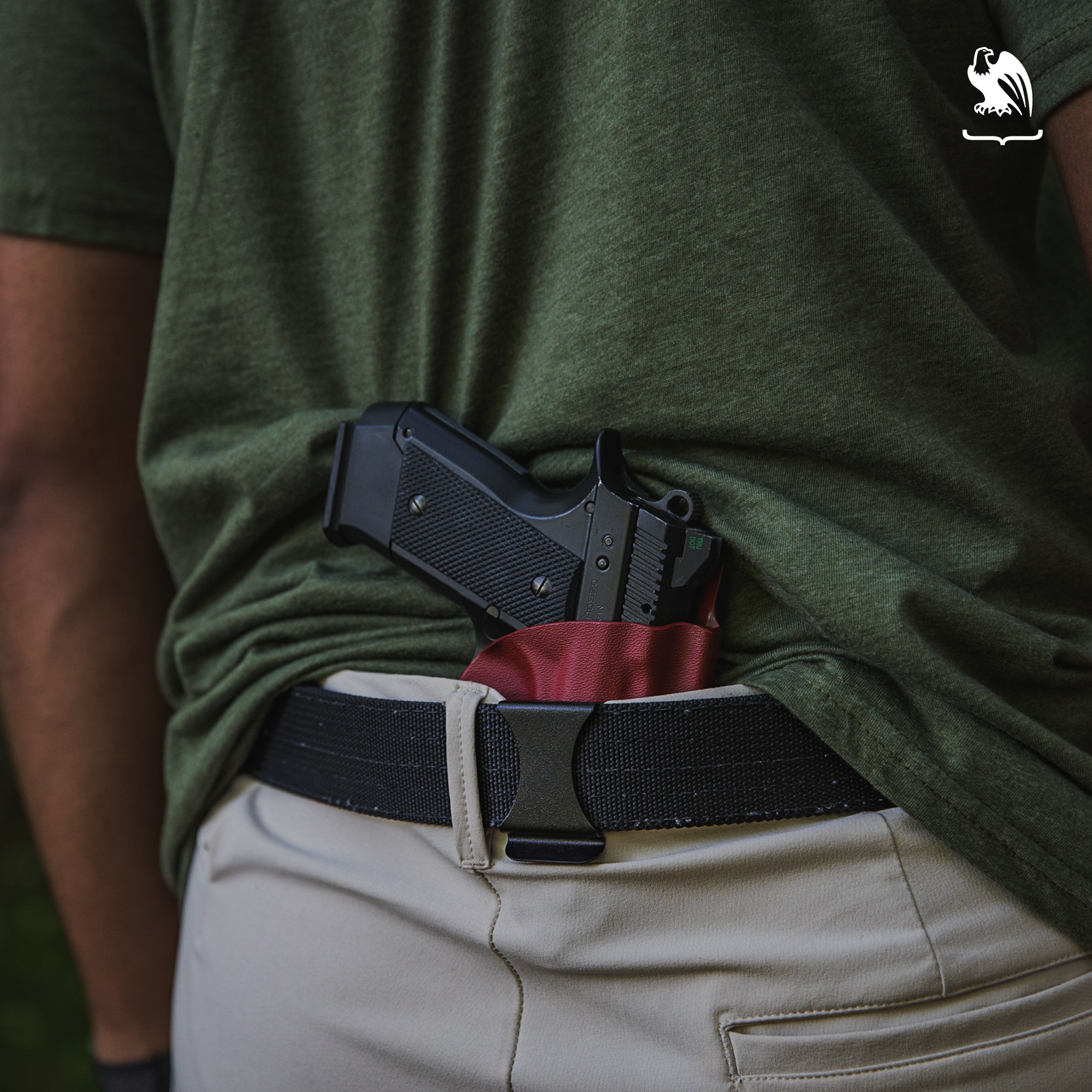
While carrying your gun at the small of your back may be comfortable, it can also be a serious safety hazard in certain situations.
As we mentioned above, there is always a risk of being shoved into a wall or falling onto the ground during a defensive encounter. In that scenario, not only will you be unable to access your pistol, but you’ll likely fall right onto your weapon, putting you at risk of serious injury, trainer Neil Nemetz said in a Geauga Firearms Academy video.
“If you are in a violent encounter, it’s not going to be a scenario where you’re going to be gently lowered to the ground; there’s a good possibility you’re going to get shoved down. So think about this, do you really want to get forced down to the ground with this piece of steel right in your spine? I certainly don’t,” he said.
Whether you slip on a patch of ice or get shoved down by an attacker, falling directly onto your gun could damage your sacrum or lumbar vertebrae, which can be paralyzing or even deadly.
Not only that, but drawing from SOB requires you to hold the gun at an awkward angle and bring it all the way around to the front of your body, which can put you at risk of muzzling yourself or someone else. If you fail to practice proper trigger discipline in the heat of the moment, this could cause you to accidentally shoot yourself or an innocent bystander.
Should I Carry Small of Back?
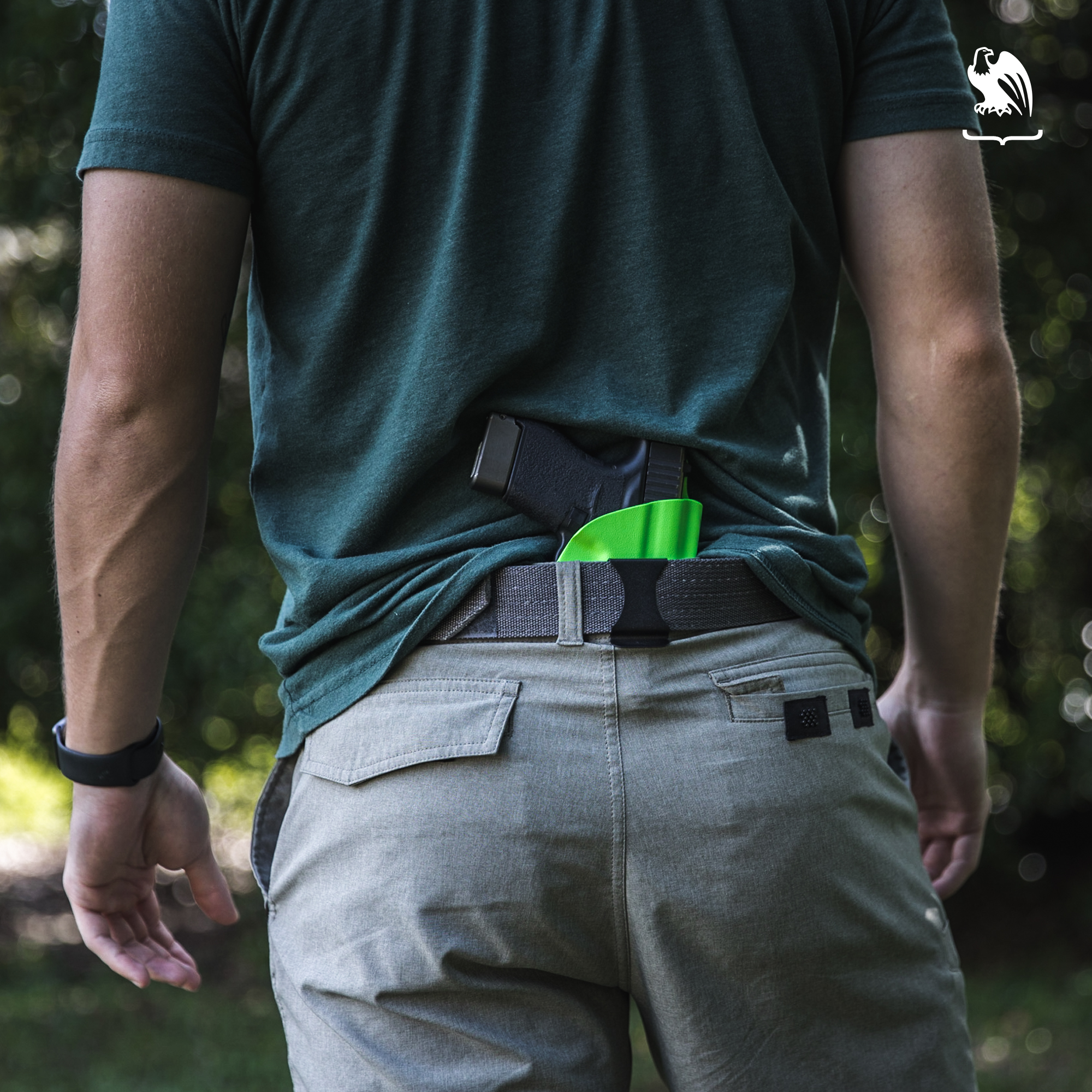
If you’re looking for a sign to tell you whether or not you should carry small of back, here it is: no, you should not carry in the 6 o’clock position.
For all of the safety reasons mentioned above, the majority of firearms experts do not recommend carrying small of the back, even as a backup gun.
“Given the challenges of comfort, the draw, and the potential for injury, small of the back carry is really not the best manner in which to conceal a pistol, which is why some people only employ it in carrying a backup gun. Even in that regard, there are still better options,” according to a USA Carry article.
Even with a special small of back holster, the risk of spinal injury just isn’t worth it. And the amount of training required to ensure you won’t flag yourself or a bystander when drawing your weapon, if you can reach it, is probably more than most of us have time for.
At the end of the day, the decision as to whether you want to carry 6 o’clock is up to you. It all comes down to how comfortable you are with the idea and how much training you’re willing to put in. While the position makes it comfortable and easy to conceal your carry gun, at the end of the day, there are other options that work just as well and aren’t as risky.
What Are the Alternatives to Small of Back Carry?
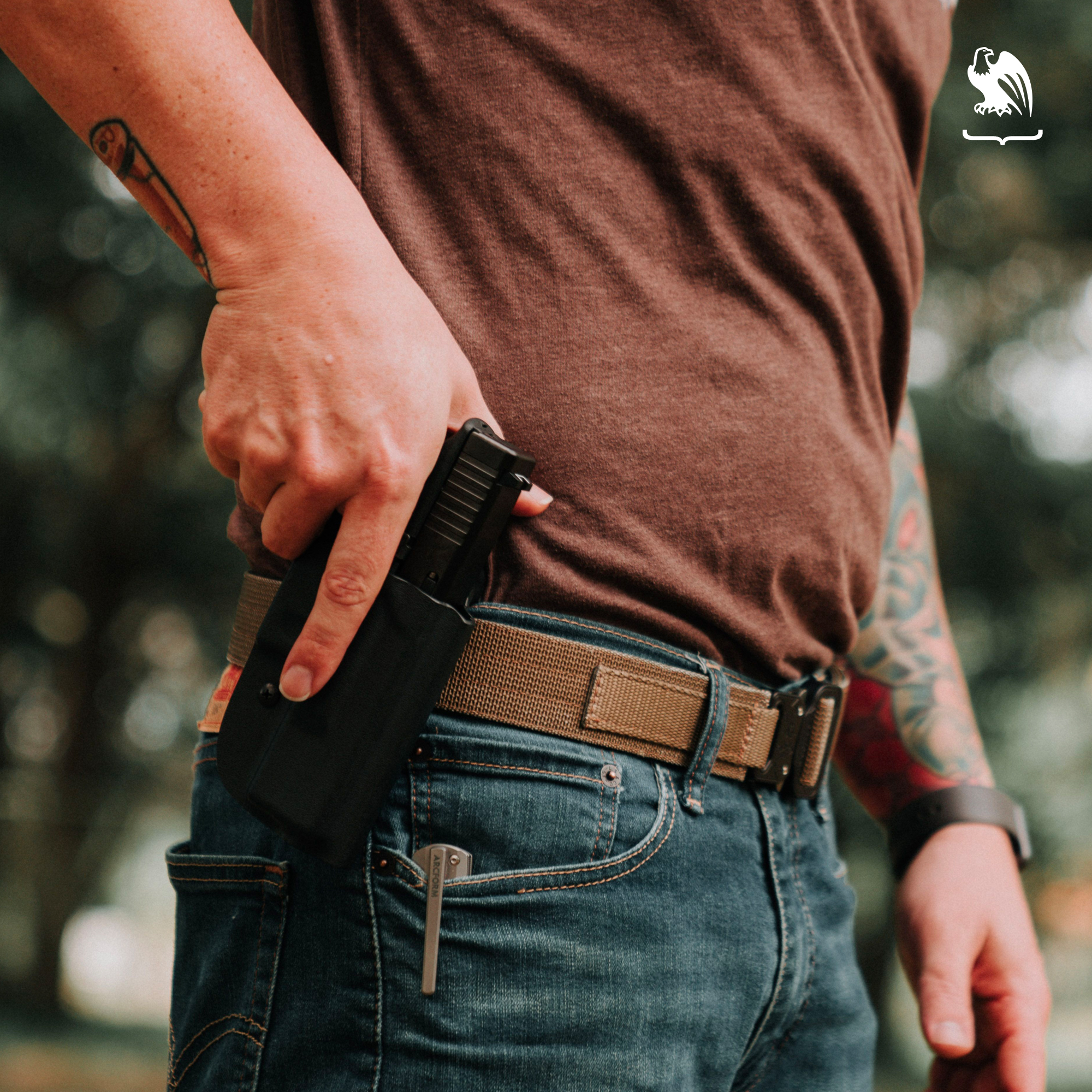
If you decide not to go with small of the back carry, don’t worry: there are plenty of alternative concealed carry positions to choose from.
One of the most popular carry positions is appendix, or the 1-2 o’clock or 10-11 o’clock position. This spot is often recommended since it’s easily accessible at the front of your body and is fairly easy to conceal with the right clothes.
Another common carry option is behind your hip at the 4-5 o’clock, or 7-8 o’clock for lefties, position. This is a great choice for anyone uncomfortable carrying on the front of their body but don’t want to carry SOB.
Strong side and cross draw carry may also be good options if you want to carry on the side of your hip. While these positions are the most difficult to conceal, they are easy positions to draw from and are generally pretty comfortable. The LightTuck™ IWB holster is a great option for both of these positions as well as appendix and 4-5 o’clock carry.
Finally, pocket carry may be a good alternative for those who have small concealed carry weapons and don’t want to carry at their waist. Instead of clipping to a belt, in this position, you put the holster in your, you guessed it, pocket. Our Pocket Locker is an excellent option for a quality pocket carry holster.
To learn more about the different ways you can carry IWB, check out our article here. If you’re curious about what to wear to help make concealing your gun easier, read this.
Summary
While small of the back carry is popular for being comfortable and easy to conceal, there are certain risks associated with it.
The position can be difficult to draw from, which can put you and others at risk of being shot accidentally. Carrying at the center of your back can also make it so that your gun is inaccessible in the event that your back is pressed against something and can lead to possible spinal injury if you fall onto it.
Whether you choose to concealed carry small of back carry for the comfort and concealability aspect, or you decide to opt for a different carry position due to safety concerns, it’s important to be aware of the pros and cons of your position of choice and take the precautions necessary to keep yourself and others safe.
Ultimately, the carry position you choose comes down to what you prefer and what meets your needs. We recommend visiting our Holsters by Gun Model page if you are looking for holsters that are custom-made for your weapon of choice. For all of our belt and holster options and for more information to help you choose the carry system that works best for you, visit our Vedder Holsters website.
Looking for items beyond holsters and belts, check out our Resources Page for popular product links like lights, lasers, first aid, maintenance, and more.

